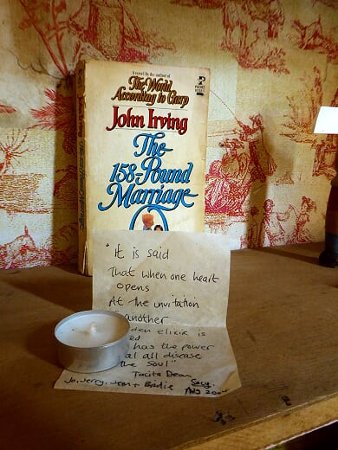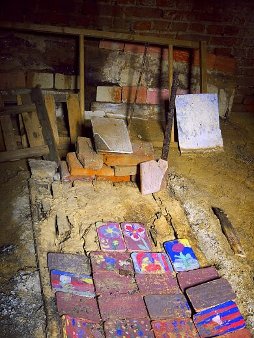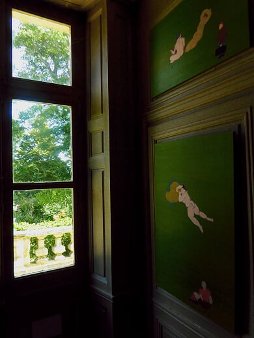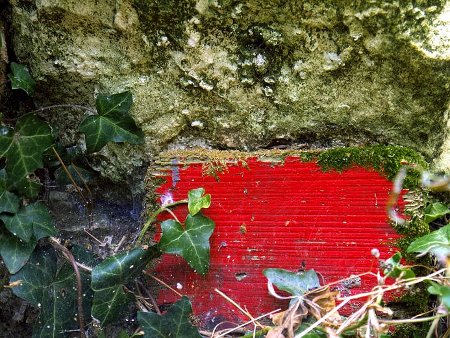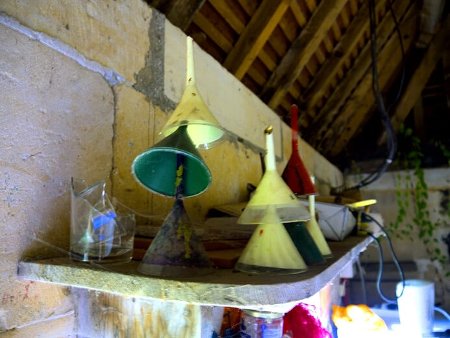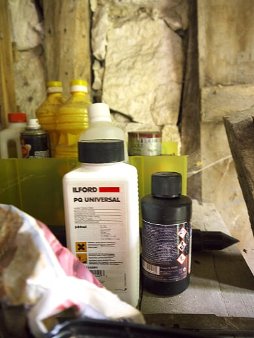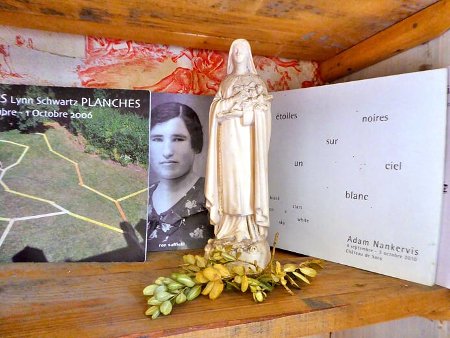Ronald Suffield
In Memory of Things Passing
Wander where you will at the Château de Sacy, you find traces of stories left behind by former occupants – passengers long disembarked, having moved on to their next destination, leaving behind traces of their passing. You gaze at and handle objects, trying to release the stories contained in their physical presence. Sometimes the sunlight funnels down through a gap in the shutters or a crack in a wall, isolating an object, as if it is crying out “I am here” and you acknowledge it and reply “I see you”. They occupy their space, never being discarded, just waiting quietly for their ray of light.
When my daughter died, I stopped working. I took to aimless wandering, usually ending up at her grave. One day a friend asked me what I was doing. “Walking during the day, drinking wine in the evening”. “Are you still taking photos?” “I’ll show you.” My friend spent some time looking, then said: ”Do you realise what you’re doing? “ I shrugged my shoulders. “You’re recording lost and abandoned things”. And so the “Lost and Abandoned” series was born. Now for the strange bit. Once I realised what I had been doing, I stopped. I still saw the objects, but I didn’t see a photograph. I didn’t see lost and abandoned things anymore, I started to see sculptures: a crumpled fast food bag on the floor, burnt out cars, stacked cardboard boxes.
And so the “Accidental Sculpture” series of photographs came about. Everything seemed sculptural. The presentation of photographs was beginning to be problematic for me, the single photographic image was not satisfying any more. I started to look at David Hockney’s “joiners”and experimented with my own. I copied the Bechers and arranged the photographs into groups. During these experiments I looked at a lot of “art” and discovered that what appealed to me held a story. And who doesn’t love a good story? So where in our everyday lives can we find a good story?
For many years I have collected old photograph albums. I started to look at them in a different way, to try and work out the narrative. I bought at auction a suitcase full of photographs, postcards and other artefacts. When I began to sort through them a story emerged, the previous owners came to life, they were no longer just faces in a photograph or names on an envelope. It was a love story about two women who met in the fifties. The last one died in 2015. There was an address, so I visited the house. It was abandoned, the garden overgrown, the front door padlocked.
The most moving part, the bit that brought the existence of this story into focus, was a wooden garden bench that appeared in a photograph, with one of the women sitting on it. It was still there. I could sit and occupy the same space as “Anne” had done in the 60’s. Later it occurred to me that in this digital age most people keep their memories on the appropriately named memory cards. It’s surprising how many cameras for sale at brocantes still contain their memory cards. I started to “liberate” them. They revealed a tradition of memory-capturing such as holiday photographs, special occasions. They also recorded a change in photography habits: the face pulling, high angle “selfies”, all have a story to tell.
And that brings me to what I am attempting to do here at Sacy in 2019. Here is one week at the Château de Sacy, captured and saved for someone to discover in the future, for them to unravel and maybe visit the Château, to occupy the same space as we who were there.
Stranger
(2007 Residency)
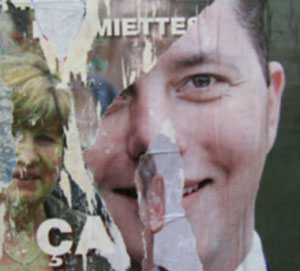
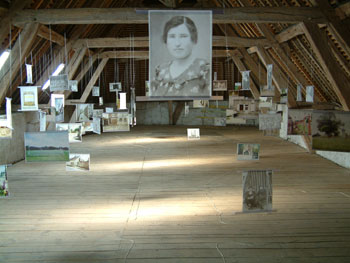
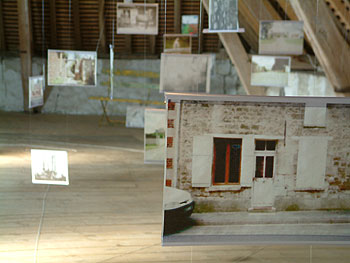
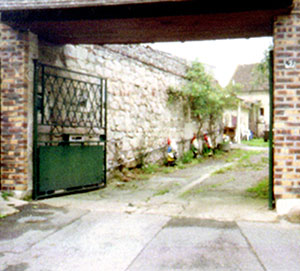
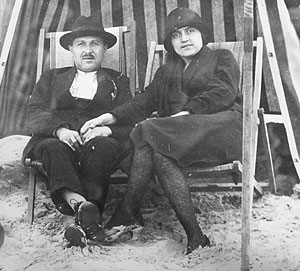
Images from a previous workshop
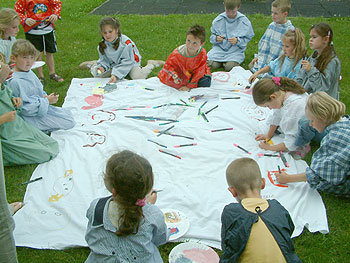
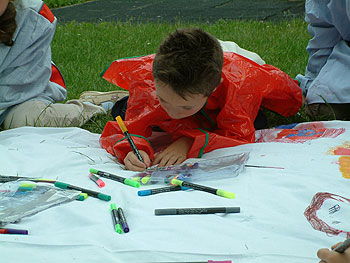
Stranger - from social engagement to solitude
The residency at Château de Sacy has come at a significant time in Suffield’s practice. The artist describes himself as ‘both film maker and photographer’ working on a variety of projects from independent short film to socially engaged contemporary art practice. Yet he questions the definition of his work: ‘Do I have an artform?’
His output has been extensive over the last eight years, working with a number of public commissioners, leading him to make work in a variety of challenging contexts. Suffield’s skill lies in his ability to respond to the demands and protocols of these contexts. Projects such as Voices (2004) and Streetcine (2004) and Signs in the Landscape (2005) present the essence of his artform - his inherent ability to socially engage and facilitate the voices of others. These works were collaborations with communities of young people, some perceived as disenfranchised and often making their first film/artwork. While the artist denies he should be seen as the ‘auteur’ of these works, they are conceptually driven by him and the results are consistently true to and present the voices of all their makers.
Naturally, theories of authorship have always been at the centre of debate in film and video production in both commercial and independent/artist context. Suffield’s desire to define his work and pin down his artform comes at a time when the role and production context of the artist is acknowledged to have expanded beyond the parameters of the traditional exhibition space or demands of the art market. At the beginning of the 21st Century artists work in a plurality of situations, their practices producing new creative economies from a diverse and varied palette of art forms which could include anything from community engagement and collaboration to sculpture and painting.
Suffield was selected for the Château de Sacy residency in 2005. Based in Picardy the residency gives a dedicated amount of time in this particular and special space for an Essex based artist to develop a new body of work. Artists are selected who are often at a crossroads and can use the time to pursue a new avenue of practice. Ron has used the residency to open up his practice to more solitary production. In Stranger he has used the lens to mediate his engagement with the community of Sacy le Petit. The barrier of language and different commissioning contexts have led him to engage in a more solitary way. He states “Here, life is only glimpsed behind gaps in gates and over walls, hinting…a child’s toy or a wheelbarrow…”
“Stranger” can be seen as a development from his exhibition Day by Day (2007) which presented a photographic diary of someone who was experiencing an intensive course of chemotherapy. The work is autobiographical as the artist diagnosed with lymphoma in 2005 had to defer the commencement of this residency until 2007. Always site-specific, Suffield’s art from is about engagement both social and solitary using the lens as his tool.
Previous Work
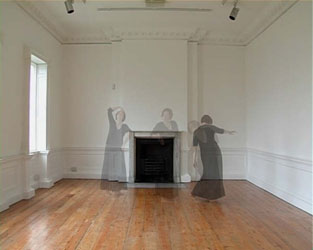
Dance#1
Still from video, 2005
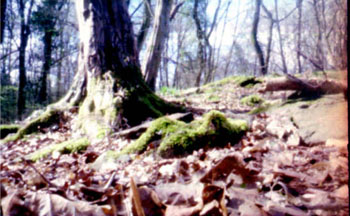
Low Level Landscape, Forest of Dean
Pinhole image, 2005
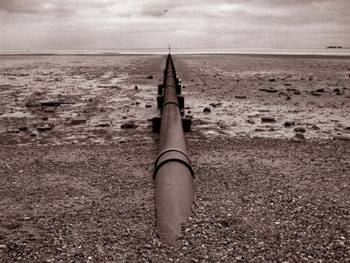
Pipeline, Mersea Beach
Digital image, 2005
